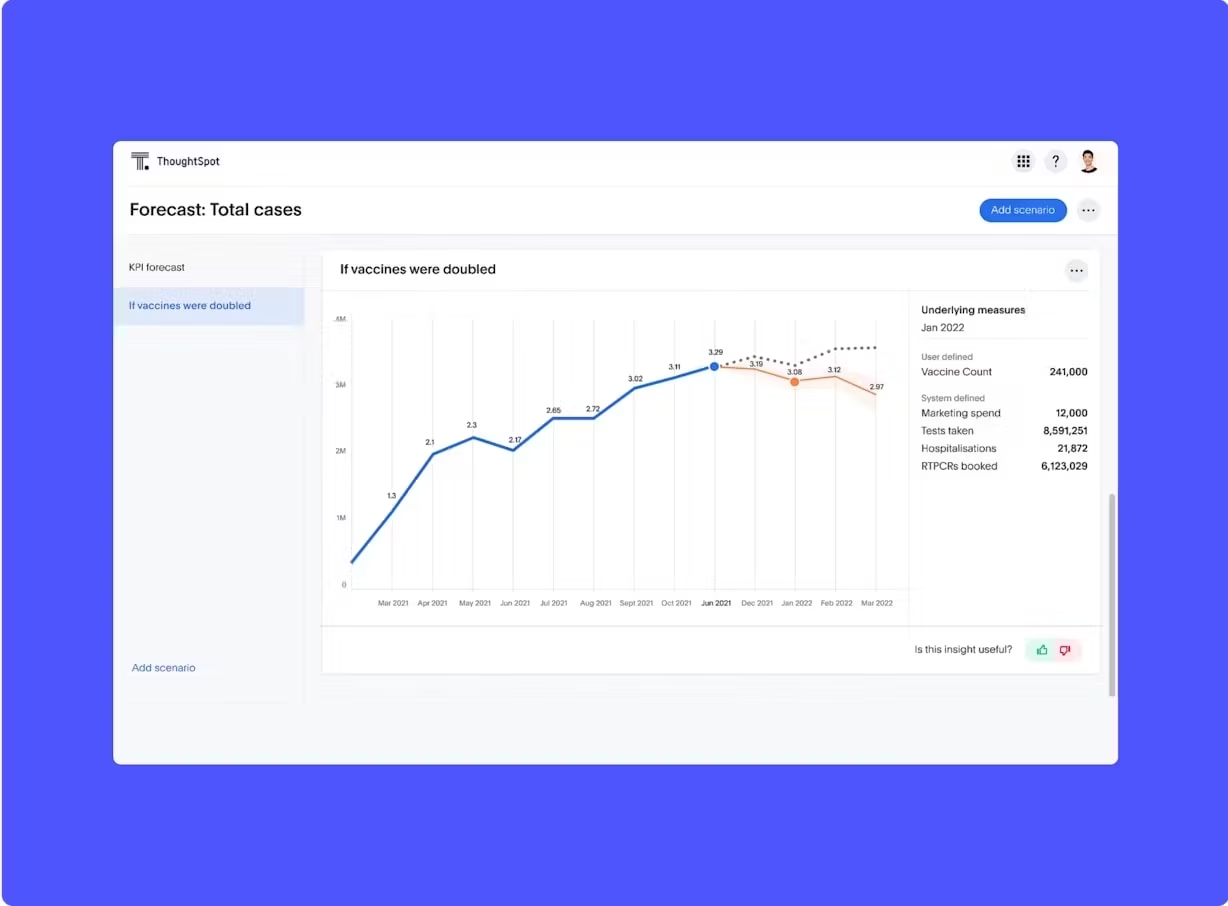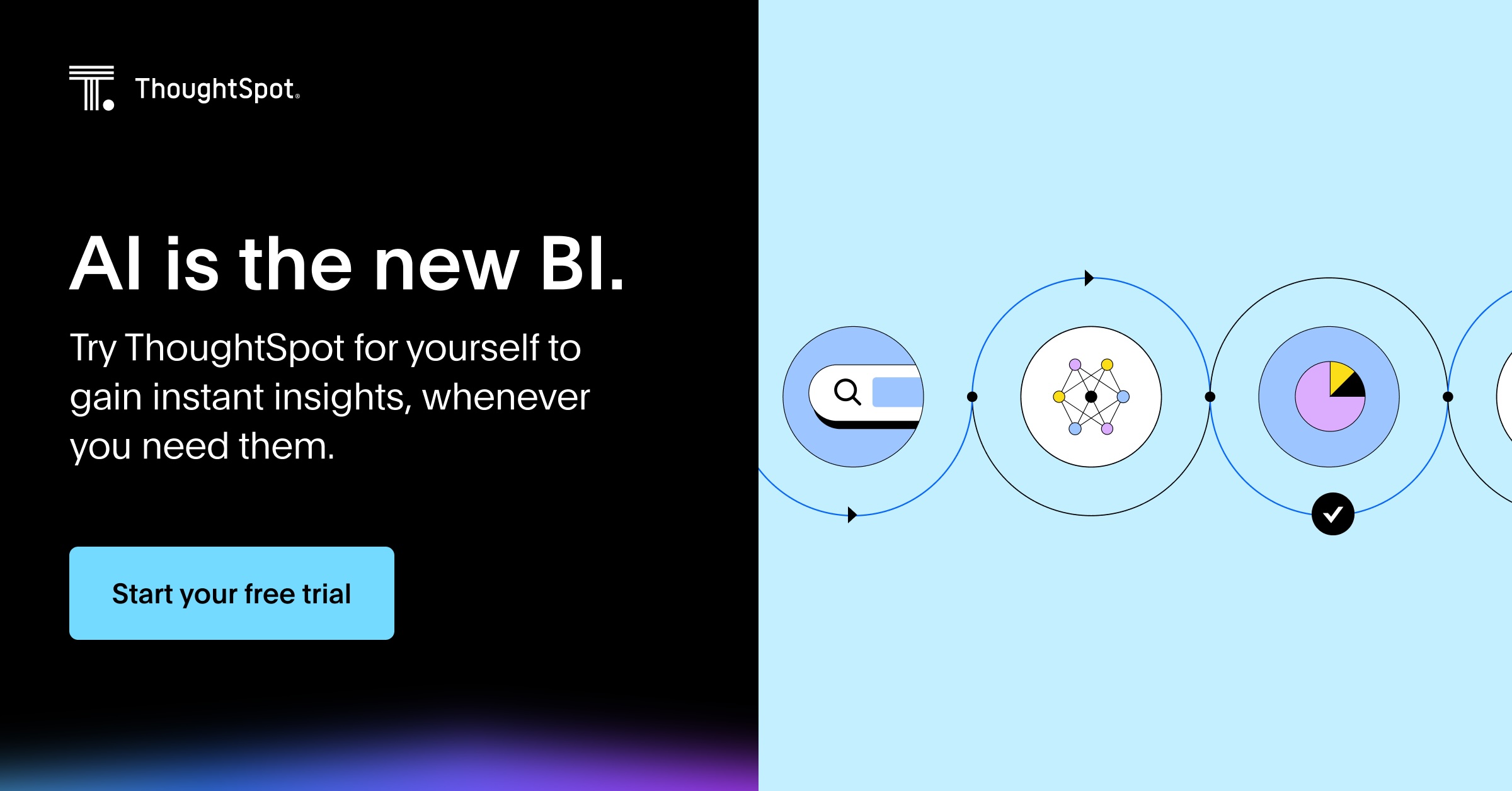Everywhere you look, data leaders are talking about how GenAI has sparked the rebirth of data analytics. Gone are the days when you had to spend weeks—if not months—preparing reports. Augmented analytics tools are making it easier than ever for leaders to gain insights, predict outcomes, and make data-driven decisions. In fact, recent research by McKinsey shows companies that leverage AI-powered analytics are seeing a 20% increase in earnings. Even better, GenAI in data and analytics is helping IT leaders reduce overhead and speed up time to insight.
But here’s the catch: With so many augmented analytics tools on the market, selecting the right solution can be daunting—that’s why so many end up managing technical debt. To avoid such outcomes, you need a thorough understanding of these platforms, their capabilities, and how they can add value to your business. This guide is designed to help with that.
Table of contents:
With so many vendors adding new AI capabilities to their offerings, it’s crucial to know which features in an augmented analytics tool are essential to derive the most value for your business. Here are some key factors to consider:
1. Is the tool built for performance at scale?
In legacy tools, organizations are so busy preparing and modeling data it’s hard to imagine a future where you can quickly go from collected data to insight to action. By choosing a modern augmented analytics solution powered by an engine built for enterprise scale, you can easily combine billions of rows of data and execute dozens of insights-detection algorithms, in seconds.
For instance, you can connect ThoughtSpot instantly to a cloud data warehouse like Snowflake and run live queries across billions of rows of data without compromising speed or quality. This ability to answer any data question with live queries gives back time to professionals, helping them focus more on strategic initiatives.
2. Does the tool automatically surface consumable and relevant insights?
Modern augmented analytics tools use AI and ML algorithms to automatically generate insights from data. Specifically, you should focus on solutions that help you easily identify patterns, root causes, trends, and anomalies. Utilizing these features will make it easier to tell a powerful data story that drives business outcomes.
Here’s an example of how ThoughtSpot’s SpotIQ automatically delivers personalized insights, allowing you to perform root-cause analysis or even set automated alerts to stay on top of KPI changes:
3. Does the tool offer advanced predictive analytics?
Predicting future performance is essential for long-term business success. Ensure the software allows you to quickly incorporate predictive ML models. This capability will empower you to forecast outcomes and get deeper insights into specific business problems.
For instance, with SpotIQ’s ML model, you can forecast trends in your metrics.

4. Does the tool allow easy follow-ups via natural language processing (NLP)?
NLP is a powerful machine learning ability that allows computers to understand, interpret, and generate human language in an understandable and meaningful way. Users can simply type a question in plain language to query the data, rather than using complicated code. By prioritizing this feature in your augmented analytics tool, you’ll empower business users to follow up on suggestions and insights produced from ML algorithms.
For instance, here’s how ThoughtSpot’s natural language search allows you to create interactive data visualizations and gain AI-powered insights within seconds:
5. Does the tool learn over time?
Augmented analytics helps in curbing human biases that can impact data analysis. AI and ML models have shown well-documented incidents of hallucinations and biases, resulting in confusion and misinformed decision-making. A human-in-the-loop feedback system allows human oversight, helping you produce accurate results and improve the model’s performance. Seek solutions with a built-in mechanism for users that help them continuously monitor the model’s performance and run tests to check for biases.
This may be a shameless plug, but we’re confident ThoughtSpot can go head-to-head with any augmented analytics solution in the market. And we're not alone in this belief—the recent Gartner Magic Quadrant recognized ThoughtSpot as the leader in BI, solidifying its position as the go-to choice for businesses seeking cutting-edge AI-powered data analytics solutions.
With Spotter, as your AI Analyst, you empower everyone to ask questions, create interactive Liveboards, and gain personalized insights about their data. Additionally, with powerful AI features like ‘Change Analysis’ and ‘AI Highlights’, you can easily discover trends, patterns, and anomalies, allowing you to get a real-time view of what’s happening in your business.
And we haven’t forgotten about your data team, they can leverage features such as Analyst Studio, Verified Liveboards, and a centralized governance system to promote trust, transparency, and security.
Core features:
GenAI-powered self-serve experience
Interactive, verifiable, personalized Liveboards
Analyst Studio for enhanced data modeling
Mobile app availability for insights on-the-go
Embedded analytics for product development
Security and governance controls
Seamless collaboration and sharing
Oracle Analytics Cloud is Oracle’s cloud-based analytics platform for reporting, analytics, and data visualization. The platform offers a code-free, drag-and-drop interface with natural language processing for building visualizations. It also supports machine learning modeling using Python, R, SQL, REST, AutoML, and no-code interfaces. The resulting models can help users interpret possible outcomes and opportunities.
Core features:
Integration with Oracle’s wider suite of analytics solutions
Open-source connectivity with multiple cloud databases
Natural language processing for visualization
Supports machine learning data modeling
On-cloud and on-premise deployment available
Alteryx is an augmented analytics platform that helps analysts and data scientists prepare, transform, and analyze data. Users can build ML models, receive automated insights, create visualizations, and leverage GenAI features to uncover hidden relationships in data. Additionally, using AiDIN Copilot, users can streamline their analytical workflows and gain AI-assisted recommendations for faster data analysis.
Core features:
Integration with cloud data sources
Low-code interface to create dashboards, widgets, and reports
AI-assisted insights and recommendations
Supports machine learning modeling
Data preparation and exploration
Cognos Analytics is IBM’s data analytics platform which supports AI-assisted data preparation, machine learning modeling, and predictive analytics. Analysts can clean and prep their data from multiple sources and use machine learning to build predictive models. IBM has recently announced a set of AI features that allow users to gain automated insights from their data.
Core features:
AI-assisted data preparation
Drag-and-drop interface for data modeling
Integration with cloud data sources
ML data modeling
Forecasting
Mobile app availability
Domo is a cloud-based augmented analytics tool that helps users gather, analyze, visualize, and share data from various sources. With a drag-and-drop interface and a pre-built visualization library, users can connect their data and build dashboards. The platform has recently added new AI capabilities that help users build advanced data models, automate workflows, predict outcomes, and monitor insights.
Core features:
Pre-built data connectors
Predictive analytics capabilities
Data modeling
Domo.AI for data preparation and automation
Available on desktop and mobile devices.
Yellowfin simplifies complex data with an end-to-end data analytics tool that allows business users to organize and prep data for visualization. That said, it’s widely used for monitoring changes in data, identifying trends, creating custom visualizations, and sharing insights across the organization.
Core features:
Dashboard creation
AI insights
Embedded analytics
Pre-built data connectors
Available on mobile devices
Although almost every company today wants to ride the AI analytics wave, simply investing in a solution labeled "AI" won't necessarily drive meaningful outcomes. To truly reap the benefits of your investments, you need an augmented analytics solution that supports a true self-service analytics use case. ThoughtSpot stands out by empowering your entire team to search for insights in a whole new way.
Consider Wellthy. By replacing traditional analytics tools with ThoughtSpot, Wellthy was able to streamline its analytics pipeline and save over $200K in costs. Even better, Wellthy’s entire team can now visualize real-time data and find all the answers they need through self-service analytics.
Experience how our AI-Powered Analytics can help you tap into the value of your data. Schedule a ThoughtSpot demo today.










